As spring progresses nature’s palette gradually includes the blue tones – blue, indigo, mauve and purple.
These colours really stand out if near clumps of yellow and orange flowers. I will start hitting the blue notes with:
1a. Coast Flax-lily Dianella brevicaulis.
It is found in dunes, cliffs and coastal heathland. It is a densely tufted, narrow leafed plant with prominent mid-rib. The pale-dark blue flowers grow on wiry-branched stems, which are much shorter than the leaves. The flowers are small, and produce small shiny, oval bright blue berries. Flowers Aug-Dec.
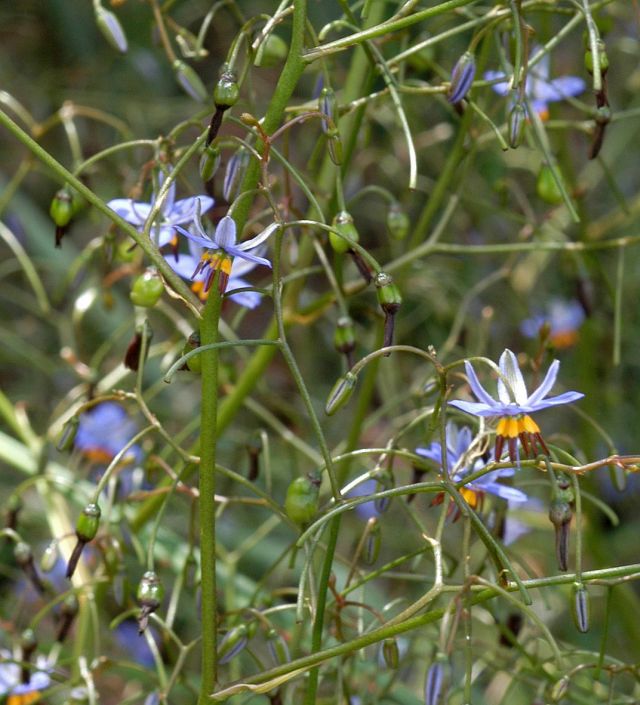 Coast Flax-lily
Coast Flax-lily
1b. Coastal Flax-lily, Dianella sp. aff. revoluta sp.
This plant is widespread in plains grassland, tea-tree heath. A robust, open tufted perennial herb, spreading by rhizomes. Dark green linear leaves of 70cm. Flowers borne on branched stems to one metre high. Flowers from Aug- May, followed by small dark blue berries. The indigenous people ate the berries and also used them to obtain blue dye. They used the tough strap-like leaves for basket-making and plaiting into cords. Native bees buzz-pollinate Dianellas.
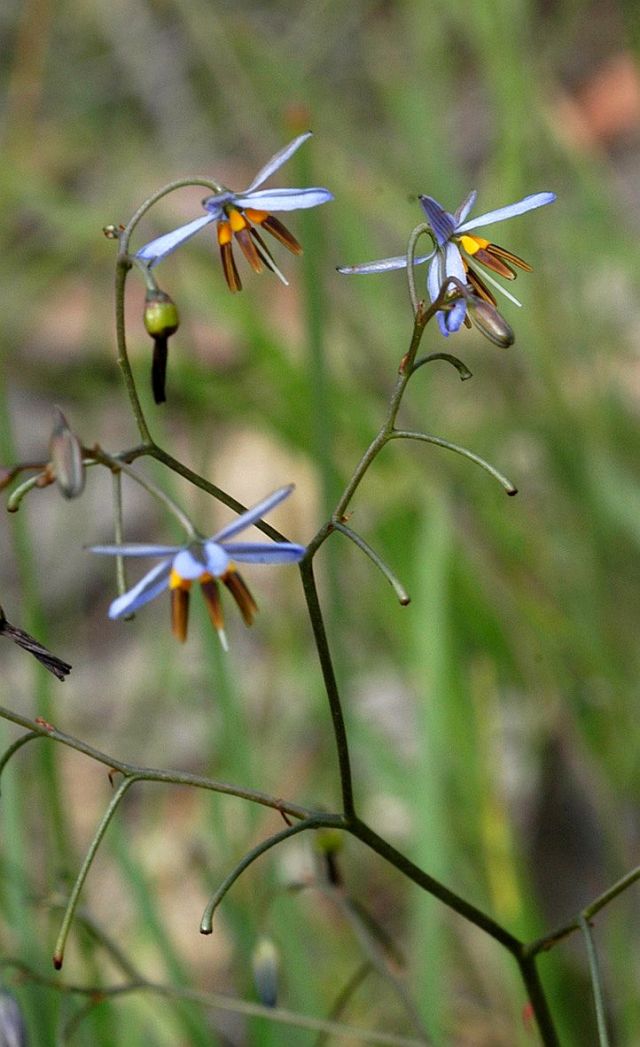 Coastal Flax-lilly
Coastal Flax-lilly
2. Austral Indigo, Indigofera australis.
This is widespread in open forest and damp sclerophyll forests. A spreading to erect shrub, with compound blue-green leaves with elliptical leaflets 10-30mm long. It has sprays of mauve-pink pea flowers, followed by cylindrical pods, which turn brown when ripe, containing several dark brown-black seeds. It flowers from Sept-Dec. A very attractive and useful shrub for understorey planting. The crushed roots were used by the indigenous people to poison fish, and they obtained blue dye from the flowers.
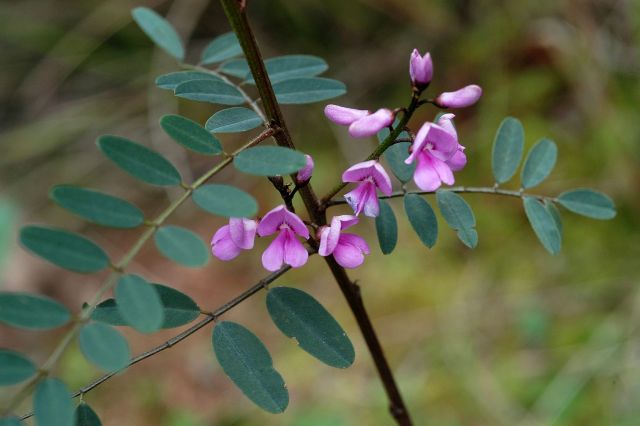 Austral Indigo
Austral Indigo
3. Common Hovea, Hovea heterophylla.
The Common Hovea is found in sclerophyll forest, and teatree heath. An open trailing sub-shrub, it has variable olive green leaves. The lower leaves are oval, spread out along the stem, and become narrower and longer as they go up the stem. Small mauve flowers with dark purple centre are in clusters in leaf axils. It flowers from Aug–Oct. All species are endemic to Australia. A dainty little plant to have in the garden or rockery.
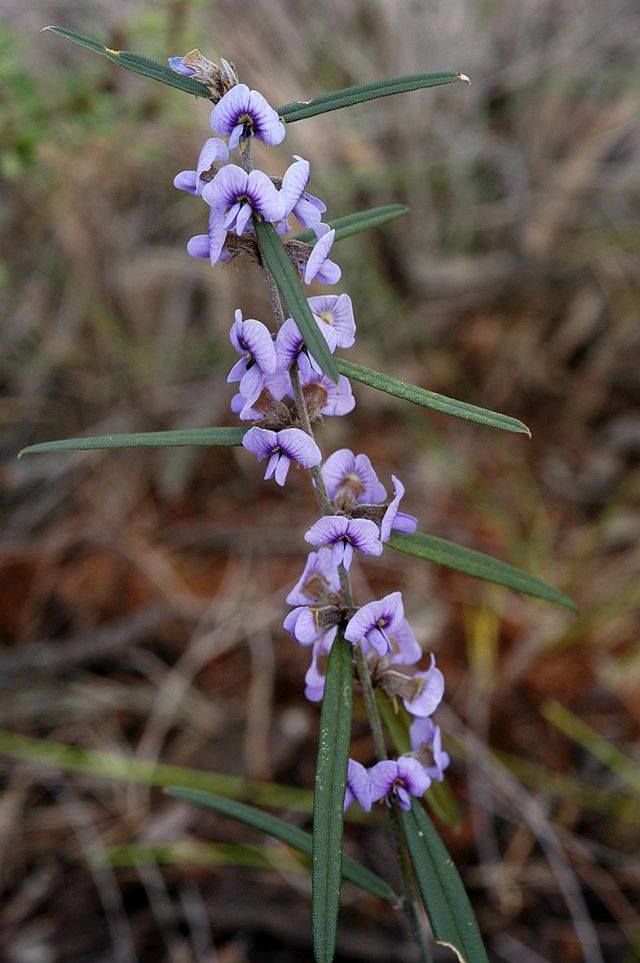 Common Hovea
Common Hovea
4. Blue Squill/Blue Stars, Chamaescilla corymbosa var. corymbosa.
This plant is widespread in woodlands and heathlands. The tiny perennial herb has a few basal dull-green narrow grass-like leaves to 15 cm long lying flat on the ground. The bright sky-blue flowers open in terminal clusters of one to ten, 15 mm wide on slender stems. It flowers from Aug–Nov. Individual flowers only last one day. Plants die back to tuberous root stock in the dry months. It produces a three-lobed capsule containing lens-shaped black seeds. En masse they make a beautiful sight.
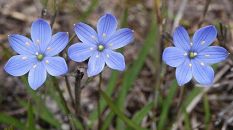 Blue Squill/Stars
Blue Squill/Stars
5. Love Creeper, Comesperma volubile.
The Love Creeper is widespread in open forests and tea-tree heath. It has slender dark green smooth stems which are almost leafless, or sometimes reduced to scales. The pea-like blue flowers are in loose clusters. This climber twines among other vegetation, or on trees or fences for support. It can reach up to three metres high. After flowering it produces a flattened two-seeded capsule. The seeds are hairy. The plant is an endemic Australian genus.
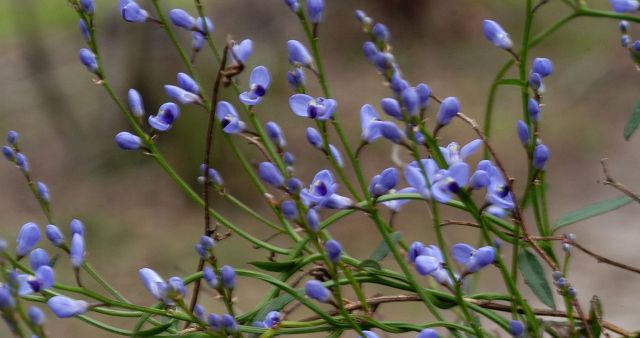 Love Creeper
Love Creeper
Philippa Hesterman
Photos: Courtesy of Margaret MacDonald
References:
Flowers of Anglesea and Aireys Inlet, edited by Margaret MacDonald.
Flora of the Otway Plain and Ranges 1.
Flora of the Otway Plain and Ranges 2.
Flora of Melbourne – 3rd Enlarged edition.